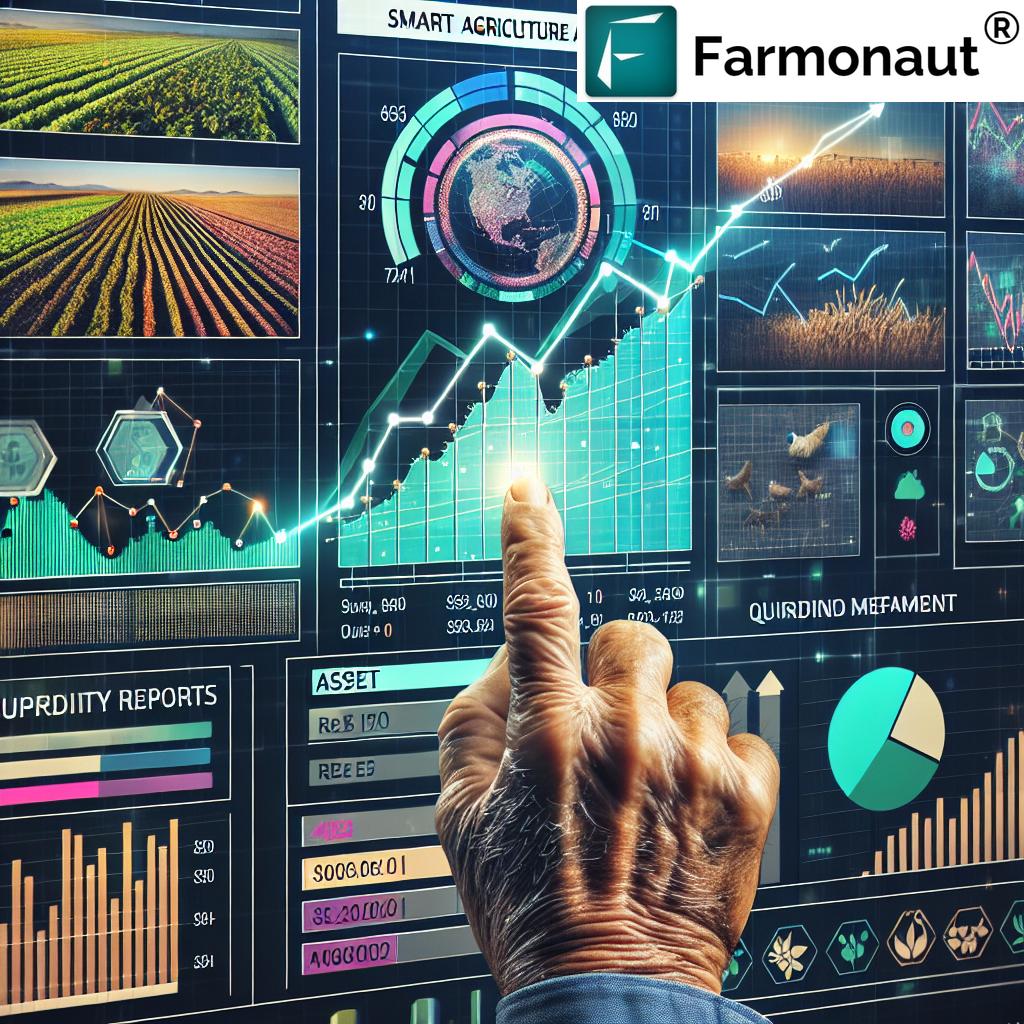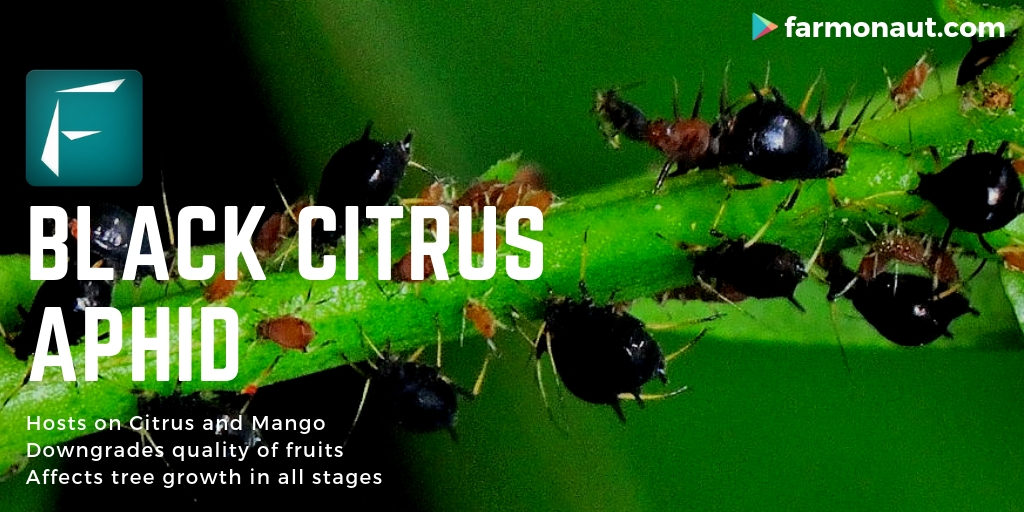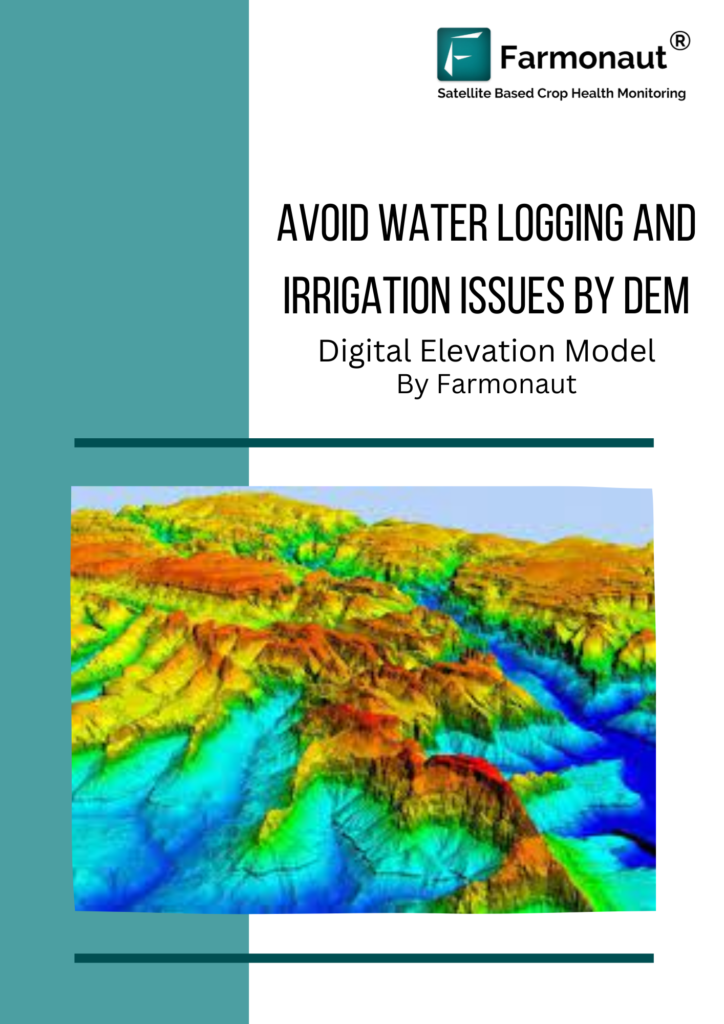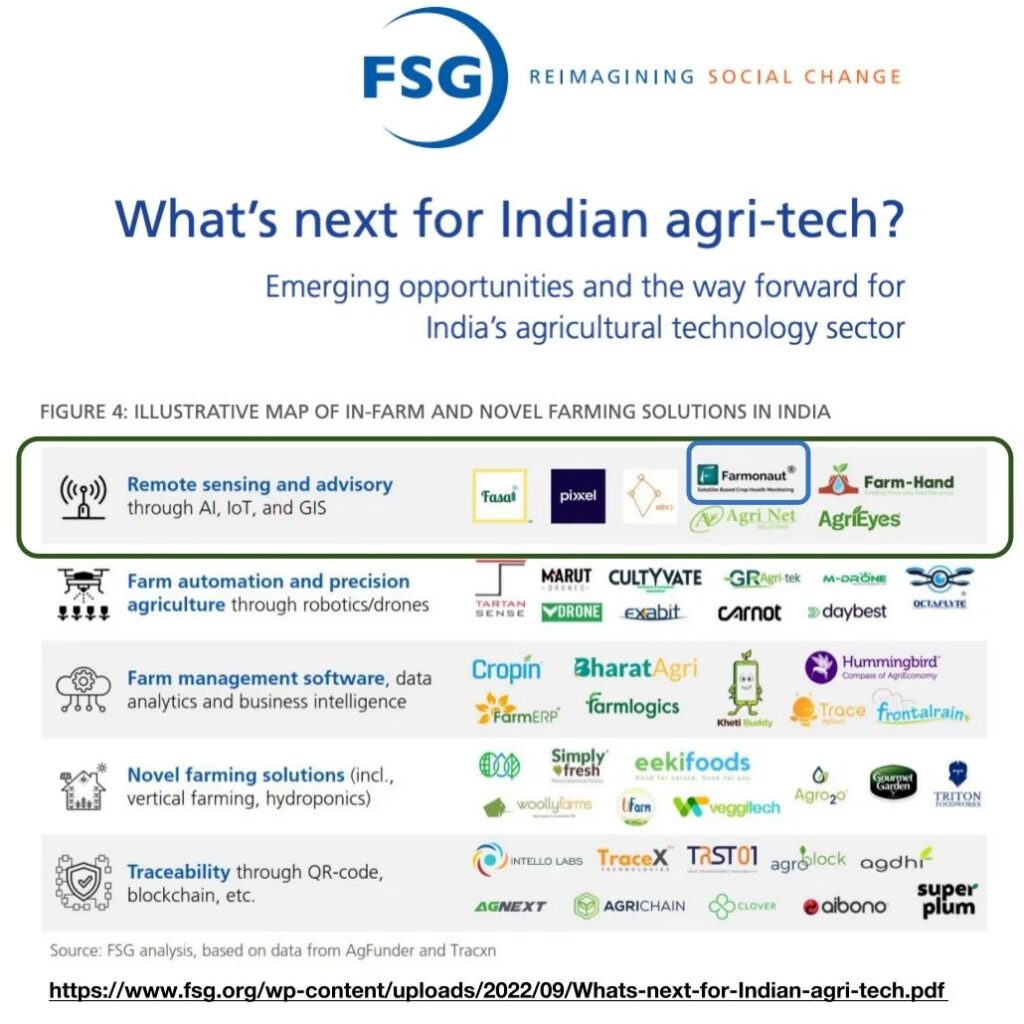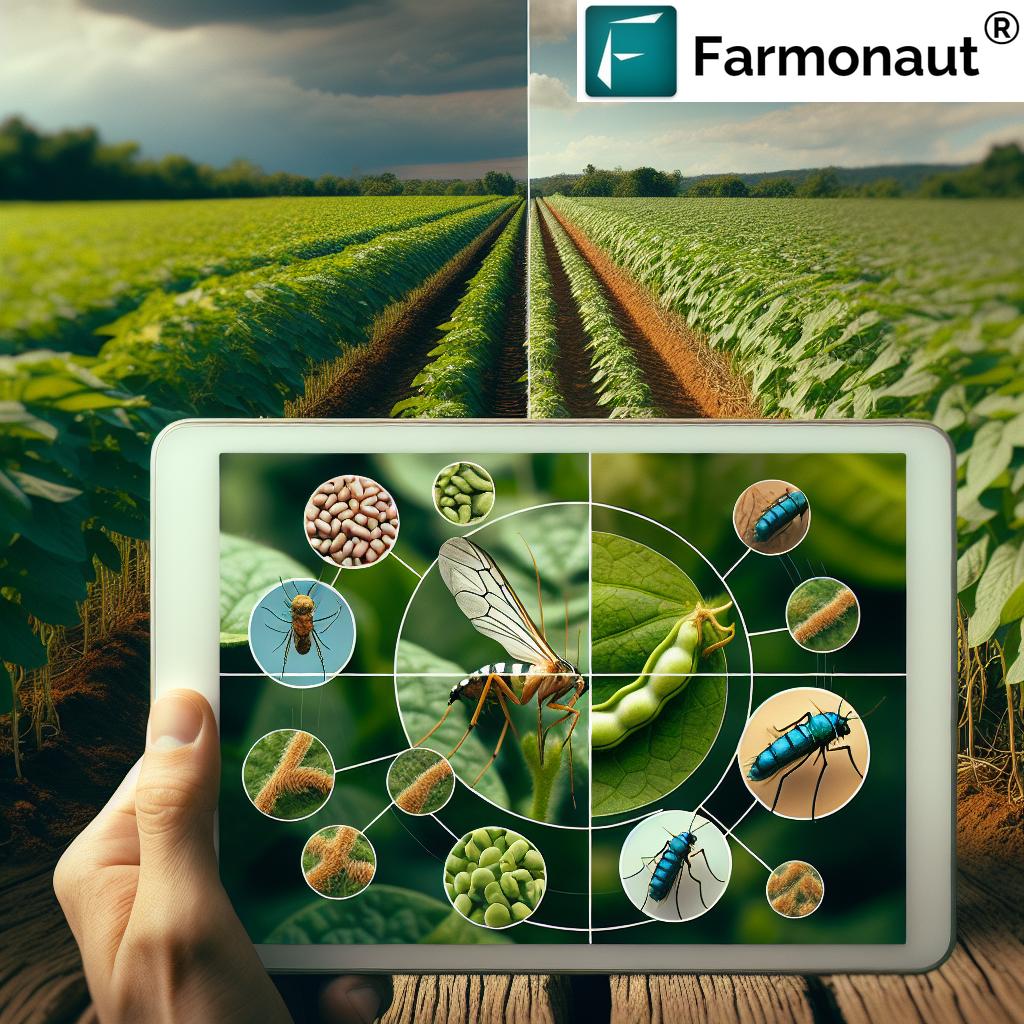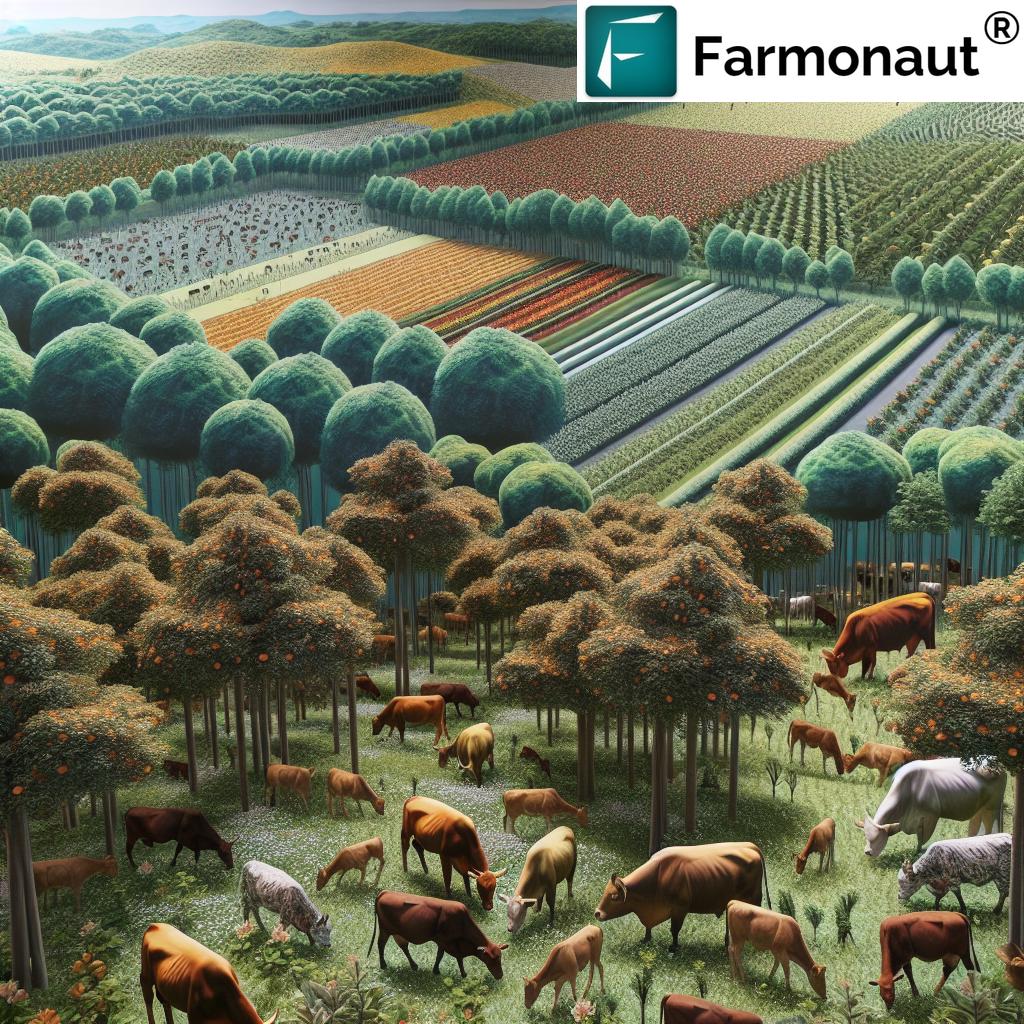7 Shocking Carbon Farming Initiative Secrets Revealed!
“One hectare of agroforestry can sequester up to 10 metric tons of carbon dioxide annually.”
Table of Contents
- Carbon Farming Initiative: A Comprehensive Overview
- Secret 1: The Hidden Power of Soil in Carbon Sequestration
- Secret 2: No-Till Farming & Cover Cropping—Preserving Earth’s Carbon Vault
- Secret 3: Biochar Application—Turning Waste into a Climate Asset
- Secret 4: Agroforestry for Carbon Capture—Integrating Trees Into Agriculture
- Secret 5: Reforestation Programs—Restoring Landscapes and Ecosystems
- Secret 6: Carbon Credits for Farmers—Unlocking New Markets
- Secret 7: Farmonaut—Revolutionizing Carbon Monitoring & Sustainable Agriculture
- Comparison Table: Carbon Farming Initiatives & Environmental Impact
- Challenges & Considerations in Carbon Farming
- The Future of Carbon Farming Initiatives
- Farmonaut Subscription Options
- FAQ
- Conclusion
Carbon Farming Initiative: A Comprehensive Overview
Carbon farming, or carbon sequestration in agriculture, is fundamentally transforming the way we think about climate change mitigation and sustainable farming practices. This innovative initiative encompasses agricultural, soil, and forestry practices designed for capturing and storing atmospheric carbon dioxide (CO₂) in both soil and vegetation. By doing so, carbon farming not only mitigates greenhouse gas emissions and global climate change, but also enhances soil structure, boosts farm productivity, safeguards food security, and enriches biodiversity.
The Carbon Farming Initiative (CFI), with its rich array of global programs and sector-led strategies, aims to promote these climate-positive agricultural solutions worldwide. We’ll uncover the secrets behind these groundbreaking practices—from no-till farming and cover cropping to agroforestry, biochar application, reforestation programs, and emerging market and technology opportunities (carbon credits for farmers, digital monitoring, etc.).
Let’s embark on this journey to unlock the 7 most shocking secrets of the Carbon Farming Initiative—secrets that have the power to reshape our agricultural future, support our landowners and farmers, and help us all be champions in the fight against climate change.
Secret 1: The Hidden Power of Soil in Carbon Sequestration
At the core of every successful carbon farming initiative lies an overlooked but vital agent: soil. Healthy, living soils are not just a foundation for crops—they act as massive carbon sinks.
By sequestering atmospheric carbon dioxide in the form of organic matter, soil becomes a central player in our climate change mitigation strategies. This so-called “soil carbon storage” is achieved through:
- Enhanced organic matter inputs from cover crops, residues, and manure
- Reduction of tillage and soil disturbance
- Better crop rotation and diversification
- Maintenance of soil structure and microbial habitats
- Biochar application (explored in Secret 3)
The true power of soil carbon farming practices is in their ability to boost both agricultural productivity and landscape resilience, as increased soil organic carbon means better nutrient cycling and improved water retention.
“Soil carbon farming practices can increase soil organic carbon by 0.4% per year, boosting climate resilience.”
Through innovative soil monitoring services such as Farmonaut’s platform (see Secret 7), farmers can now assess organic carbon levels in their land in real-time, allowing for more informed and sustainable decisions that benefit both harvests and the environment. Learn more about Farmonaut’s carbon footprinting solution for precise environmental impact monitoring.
Secret 2: No-Till Farming & Cover Cropping—Preserving Earth’s Carbon Vault
One of the most effective yet underestimated techniques in the Carbon Farming Initiative involves reducing soil disturbance and ensuring year-round soil cover:
The No-Till Revolution
- No-till farming eliminates traditional plowing, avoiding the breakup and oxidation of organic matter in the soil.
- This practice preserves soil structure, reduces erosion, and limits greenhouse gas releases.
- On average, no-till practices can sequester 0.3–1.0 metric ton of carbon per hectare per year, depending on soil type and climate (source).
The Power of Cover Cropping
- Cover crops—planted during off-seasons—add organic matter, protect soil from erosion, and bolster microbial life that enhances carbon sequestration in agriculture.
- Common cover crops include legumes (fixing atmospheric nitrogen), grasses, and brassicas.
- They can increase overall soil carbon storage and reduce the risk of nutrient leaching into water bodies.
Advocating for no-till and cover cropping is a straightforward yet transformative way to reduce emissions, improve yields, and foster healthier farm ecosystems. These sustainable farming practices are promoted worldwide under many initiatives, from the Victorian Carbon Farming Program (VCFP) in Australia to international movements in North America and Europe.
For farmers seeking comprehensive monitoring and advisory, Farmonaut’s Large-Scale Farm Management Suite uses satellite data to track ground cover, crop health, and soil patterns, making it easier to implement and verify these climate-smart methods.
Secret 3: Biochar Application—Turning Waste into a Climate Asset
Among the most exciting breakthroughs in carbon sequestration in agriculture is the biochar application. Biochar is a stable type of charcoal, produced by heating organic materials like crop residues in a low-oxygen environment—a process called pyrolysis.
How It Works:
- Production: Crop residues, manures, or forest wastes are heated to convert them into a stable carbon-rich form.
- Soil Application: This biochar is then added to soils to enhance soil carbon storage, boost microbial activity, and improve soil fertility.
- Climate Benefits: Biochar’s stable carbon can persist for hundreds to thousands of years, effectively sequestering CO₂ long-term while also helping reduce emissions from agricultural operations.
Biochar is now acknowledged in major research projects and programs supported by the CFI for its dual benefits: reducing greenhouse gas emissions and enhancing soil health.
Explore how biochar fits into a broader climate strategy and see the latest research on biochar application and carbon sequestration via FSSustainability’s CFI grant research.
Eager to digitize soil carbon tracking and evaluate biochar efficiency? The Farmonaut Carbon Footprinting Portal enables farm owners and agribusinesses to quantify carbon emissions and sequestration with ease, supporting sustainable reporting and decision-making.
Secret 4: Agroforestry for Carbon Capture—Integrating Trees Into Agriculture
What happens when we merge the strengths of forestry with agriculture? We unlock the true potential for carbon farming initiatives—and agroforestry for carbon capture is one of the most powerful solutions in this field.
- Agroforestry is the practice of integrating trees and shrubs within landscapes used for crops or livestock, blending cultivation for multiple ecological and economic benefits.
- It increases both above-ground (woody biomass) and below-ground (soil organic carbon) storage.
- Agroforestry can sequester up to 10 metric tons of carbon per hectare annually—a far higher rate than traditional croplands.
- This approach reduces erosion, improves local climates, and creates corridors for wildlife, enhancing biodiversity.
Major international initiatives like the Kenya Agricultural Carbon Project (KACP) and the African Forest Landscape Restoration Initiative (AFR100) have demonstrated how multilayered agroforestry on degraded land can transform both the environment and local economies.
Farmers seeking advisories for efficient tree planting, management, and monitoring can now use digital solutions such as Farmonaut’s Crop Plantation & Forest Advisory Tool. Empowering sustainable decisions with satellite data ensures agroforestry’s effect is optimized for climate protection.
Secret 5: Reforestation Programs—Restoring Landscapes and Ecosystems
Large-scale reforestation programs form a cornerstone of current climate change mitigation strategies. Such initiatives aim to restore forested land by planting trees where their cover was lost due to past conversion for agriculture, mining, or urbanization.
These reforestation projects not only increase carbon storage in above-ground biomass and soil but also play a decisive role in:
- Reducing soil degradation and erosion
- Restoring hydrological cycles
- Promoting regional cooling and microclimate moderation
- Enhancing biodiversity and ecosystem services
- Delivering community benefits through new jobs and sustainable wood/timber markets
Major efforts, like the AFR100 Initiative, target international restoration of 100 million hectares by 2030 across Africa (read more).
Monitoring and managing reforestation projects is increasingly digital, with satellite-based platforms such as Farmonaut allowing for real-time assessment of forest regrowth, tree health, and landscape carbon trends.
Secret 6: Carbon Credits for Farmers—Unlocking New Markets
One of the most transformative impacts of the Carbon Farming Initiative is its ability to link farmers with agricultural carbon markets and open new revenue streams:
- By adopting recognized sustainable farming practices (like soil conservation, tree planting, and biochar application), farmers can generate verifiable carbon credits.
- These credits are tradeable assets on both voluntary and compliance markets, allowing producers to monetize emissions reductions or carbon sequestration.
- Programs such as Kenya’s KACP and Australia’s VCFP assist small landowners and large agribusinesses alike in this process.
- Recent United States programs invest millions in helping smaller forestland owners participate in the expanding carbon credits market (AP News).
A key barrier, however, is ensuring robust measurement, reporting, and verification so that credits are real and create trust in the system. Blockchain-based solutions, like Farmonaut’s Product Traceability platform, help ensure full transparency and integrity from farm to market, making it easier to document, audit, and build trust for buyers and regulators.
Want to integrate satellite and weather data into your own applications, creating seamless farm-to-market tracing or carbon accounting? Developers can leverage the Farmonaut Satellite API and see full implementation details in the Farmonaut API Developer Docs.
Secret 7: Farmonaut—Revolutionizing Carbon Monitoring & Sustainable Agriculture
Digital technology is at the heart of scaling up the effectiveness of the Carbon Farming Initiative. Farmonaut is pioneering this space with a comprehensive platform for satellite-powered crop, soil, and forestry monitoring.
Why Farmonaut Matters for the Carbon Farming Initiative
- Multispectral Satellite Crop Health Monitoring: Real-time data on vegetation health (NDVI), soil moisture, and biomass for precision farming that minimizes waste and maximizes productivity.
- AI-Based Advisory (Jeevn AI): Custom farming strategies and weather insights, helping optimize resource use and reduce unnecessary emissions.
- Carbon Footprint and Resource Management: Monitor, report, and reduce environmental impact with real-time carbon footprinting, fleet tracking, and efficient input application.
- Blockchain-Based Traceability: Build trust in carbon credits for farmers and supply chains with secure, transparent data on every harvest.
- Global Scalability and Accessibility: Open to all—from smallholders to agribusinesses and governments—for the affordable adoption of sustainable farming practices.
Farmonaut is not a marketplace, farm input provider, machinery seller, or regulatory body: our role is technology and data enablement. Through satellite-based tracking, we allow landowners and farmers to participate confidently in carbon farming, comply with program standards, and benefit fully from agricultural carbon markets.
Comparison Table: Carbon Farming Initiatives & Environmental Impact
| Initiative/Technique | Description | Estimated Annual Carbon Sequestration (t CO₂/ha) | Climate Mitigation Impact | Estimated Adoption Rate Globally (%) |
|---|---|---|---|---|
| No-Till Farming | Minimizes soil disturbance by avoiding traditional plowing, preserving soil carbon and reducing erosion. | 0.3 – 1.0 | Medium | 25 |
| Cover Cropping | Planting crops in off-seasons to add organic matter, protect soil, and boost soil carbon storage. | 0.4 – 1.2 | Medium–High | 12 |
| Biochar Application | Addition of carbon-rich biochar to soils for stable long-term carbon storage and improved fertility. | 0.7 – 2.0 | High | 3 |
| Agroforestry | Integrating trees and shrubs into crop/livestock systems to enhance above and below-ground carbon storage. | 3.5 – 10.0 | Very High | 8 |
| Reforestation | Planting native trees on previously converted lands to restore forests and maximize carbon sequestration. | 6.0 – 12.0 | Very High | 5 |
| Grassland Restoration | Restoring degraded grasslands by re-establishing perennial plant cover and soil health. | 0.5 – 1.7 | Medium | 7 |
| Wetland Restoration | Rewetting and replanting wetlands for methane capture and peat soil carbon protection. | >10 (highly variable) | High | 1 |
Challenges & Considerations in Carbon Farming Initiatives
1. Economic Barriers & Transaction Costs
- The cost and complexity of greenhouse gas quantification, reporting, and verification can be prohibitive—often outstripping the price paid for carbon credits, especially for small-scale farmers.
- The USDA and others have highlighted that high transaction costs are slowing adoption (read more).
2. Market Trust and Integrity
- Instances of low-quality or fraudulent carbon credits hurt market trust, stalling programs and discouraging buyers.
- Robust monitoring, blockchain-based transparency, and independent verification are vital for credibility (Time.com).
3. Scientific Uncertainty and Variability
- Effectiveness of practices—such as no-till and cover cropping—in permanent carbon sequestration varies with soil type, climate, and management.
- High-quality, long-term field research is necessary, and emerging technologies like Farmonaut’s AI-driven monitoring are contributing to more consistent and scalable results (Reuters).
4. Accessibility & Capacity Building
- Many landowners lack the digital tools, advisory support, or technical skills needed to participate effectively in carbon markets and initiatives.
- Accessible mobile- and web-based platforms like Farmonaut are bridging this gap for sustainable adoption globally.
The Future of Carbon Farming Initiatives
The global momentum behind carbon farming is accelerating, with governments and organizations scaling investments. Examples include the U.S. government’s $150 million commitment to help smaller landowners benefit from carbon markets, and the expansion of the U.S.-UAE climate-friendly farming program to $29.2 billion (Reuters COP29).
Emerging trends show increased integration of:
- Satellite monitoring and digital advisory tools to support decision-making and reporting
- Automated, blockchain-tracked supply chain and traceability solutions for credibility in carbon credits
- Greater international collaboration and harmonized climate programs at scale
Farmonaut is at the forefront, ensuring that advanced, affordable tools are available to everyone involved in farming, forestry, and climate protection.
Farmonaut Subscription Options
Choose from flexible, affordable plans tailored for everyone—individual farmers, agribusinesses, government agencies, and research institutions. Farmonaut subscriptions include access to precision satellite crop monitoring, AI-driven advisory (Jeevn AI), blockchain-based product traceability, and carbon footprinting solutions to promote sustainable agriculture and maximize your farm’s productivity. Start your sustainable farming journey today!
Frequently Asked Questions (FAQ) – Carbon Farming Initiative Secrets Revealed
Conclusion
The Carbon Farming Initiative is a pivotal force for global climate change mitigation, soil carbon storage, and the advancement of sustainable farming practices. From ancient lessons embedded in age-old agroforestry and reforestation to the latest digital and satellite-driven solutions, the movement empowers farmers, landowners, and agribusinesses to create a more sustainable and resilient world.
By unlocking innovative techniques, smarter market mechanisms, and affordable real-time monitoring (as enabled by Farmonaut), we are better equipped to achieve our environmental goals—secure more productive farms, enriched biodiversity, robust carbon accounting, and a brighter climate future for all. The secrets are revealed; now it’s our turn to implement and sustain them, from the ground up.








